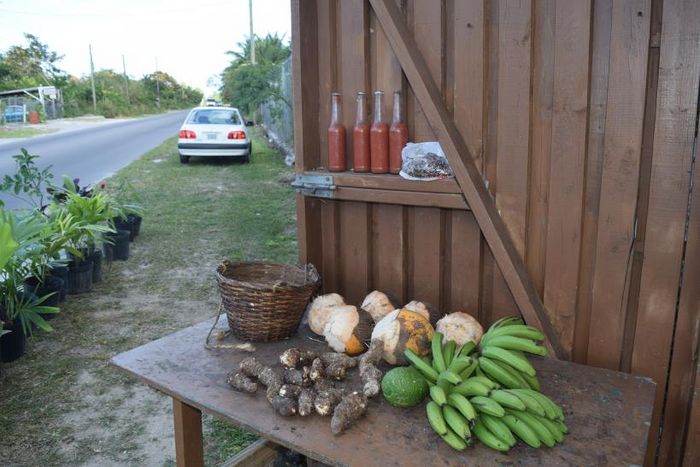Caribbean islands have increasingly turned to tourism as a pathway for economic advancement, often to the detriment of other industries, particularly agriculture. The influx of millions of tourists increases food demand, escalates food importation, and oftentimes results in food insecurity. Agritourism might be a way to stimulate domestic production and increase food security.
Almost all Caribbean countries import more than 60 percent of their food, half of them more than 80 percent. Dependence on food importation exposes countries to volatile food prices. People living beneath the poverty line are not able to afford high-quality and nutritious food. In addition, the region is vulnerable to natural hazards.
Food insecurity is defined as “the limited or uncertain availability of nutritionally adequate and safe foods or limited or uncertain ability to acquire acceptable foods in socially acceptable ways”.
Agritourism has been proposed to stimulate domestic food production and lead to greater levels of food security. Agritourism or farm-based tourism may include tourists visiting farms or participating in food festivals, fairs, or markets, or it may be indirect and include the provision of food for tourist consumption by farmers, e.g. in restaurants, stores, or hotels.
These linkages between tourism and local agriculture are intended to promote lower carbon economies through reduced shipping of produce to destinations, help prevent economic leakages by keeping profits within the country, and increase tourism-related employment beyond hotels. To find out more about the possibilities of relationships between agritourism and food security, we conducted face to face interviews with 60 current and former farmers in New Providence in The Bahamas.
Agritourism in New Providence, The Bahamas
The Bahamas is a small island archipelago on the northern edge of the Caribbean, consisting of over 700 islands. New Providence island is the seat of the Bahamian capital, Nassau, and the site of the majority of the nation's tourist arrivals. Tourism in New Providence is targeted towards relatively affluent mass tourists. A variety of restaurants, entertainment options, and shopping experiences are offered within large resorts. As one of the major Caribbean cruise destinations, New Providence also welcomes 2.6 million cruise-ship tourists per year.
Despite its overabundance of tourism, New Providence has one of the largest agricultural landholdings in the nation. A large area adjacent to the urban density of Nassau was envisioned to provide wholesome local produce and stabilize the local agricultural economy. In the decades since the land was designated for farming, several different kinds of farms have struggled to emerge.
However, local produce is often rejected by local buyers, especially buyers from the tourism industry, because it does not meet international standards for price, appearance, and consistency. Bahamian residents, increasingly connected to other markets in a globalized world, have become accustomed to imported food items.
While most of the farms produce very limited volumes, a few existing agritourism farms actively cultivate and expand local markets for their goods. One farm combines food production with tours, parties, and retail shopping. The owner, a self-taught farmer, sells eggs, a wide variety of standard Bahamian produce, and an assortment of jams and sauces to local residents and a few restaurants. Most of the tours are given to school groups to learn about farming and to discover the farming history of the island. Another farm is home to a weekly farmers’ market. The farmers are active proponents of buying local, welcoming guests to their farm and their market as a form of experiential education.
Potential for Food Security
Unfortunately, in its current form, agritourism is not yet a viable solution for the food security issues of New Providence. Instead of stabilizing domestic food production, it only stabilizes the existence of a few individual farms. It helps to increase their revenue, provide employment opportunities, and mitigate against risk during times of poor harvest or reduced market values.
If more farmers are able to engage in domestic agritourism this could contribute to increasing the availability of high-quality, locally grown, fresh produce on the island. Locally accessible farms may be capable of changing the tastes of the Bahamian middle-class vegetable palate.
Agritourism must be developed in a way that considers more than potential appeal to wealthy tourists. Local farms would have to take up the charge of producing crops that can lead to greater food security, rather than focusing primarily on herbs, microgreens, or other specialties. There must be purposeful efforts to meet both tourist and local resident demands.
Agritourism has the ability to empower small farmers to retain control of their lands, resources, and futures as farms gain value in being both a site of production and a tourism destination. However, without specific measures including regulations and participatory planning, it may only benefit a small minority of farmers. Agritourism might exacerbate hierarchies by sustaining wealthier farms. Agritourism should be inclusive of different types of farms and farmers.
There are also challenges with finding innovative ways of making agritourism attractive to different types of tourists. For islands that rely on mass tourism, visitors may be more interested in sun, sand, and sea and less open to engaging in cultural activities. The potential for agritourism remains constrained by the low demand of both residents and tourists.
Adelle Thomas is Visiting Researcher, University of The Bahamas and Senior Caribbean Research Associate, Climate Analytics. Amelia Moore is Assistant Professor, University of Rhode Island. Michael Edwards is Assistant Professor, University of The Bahamas.


